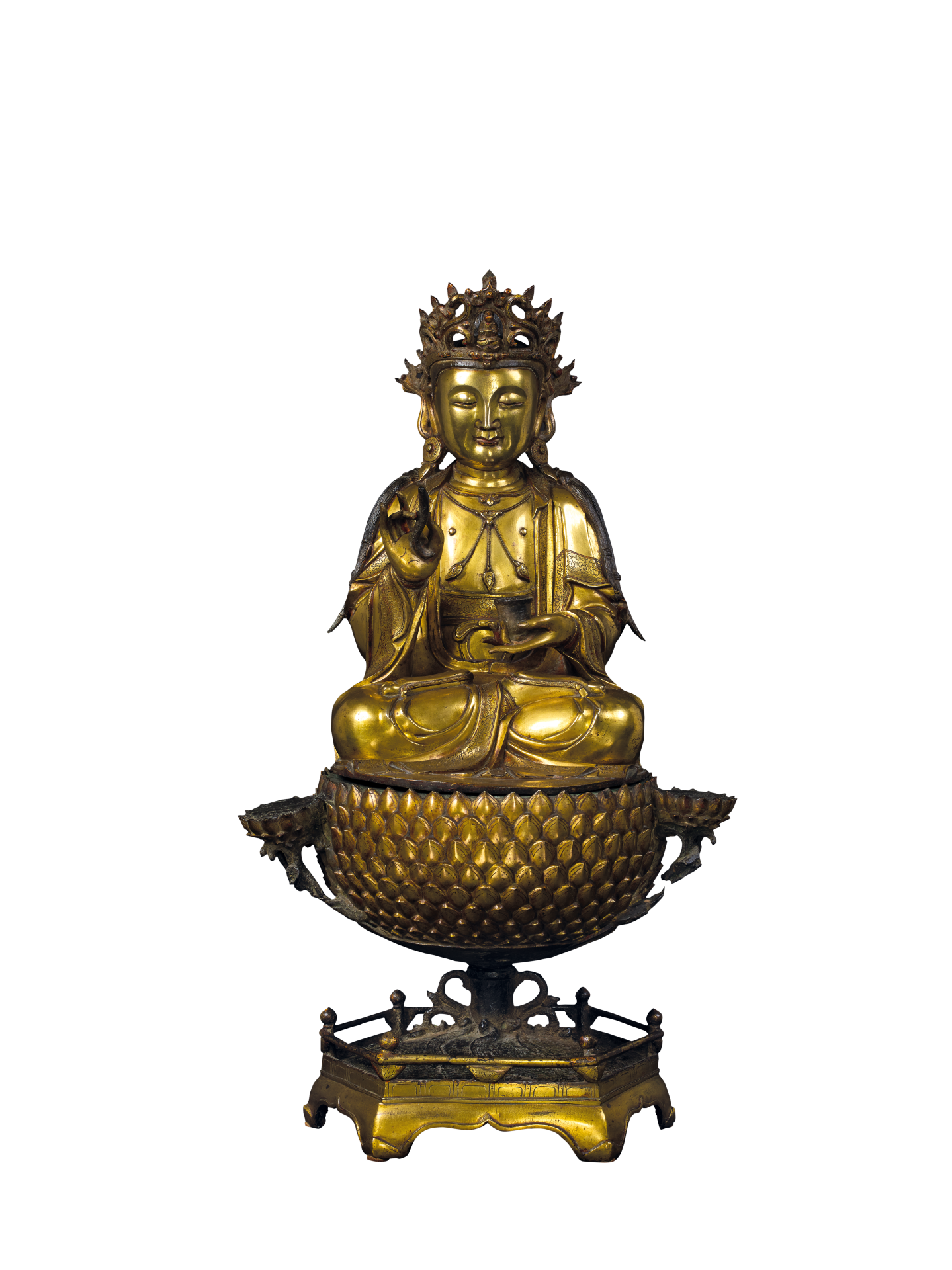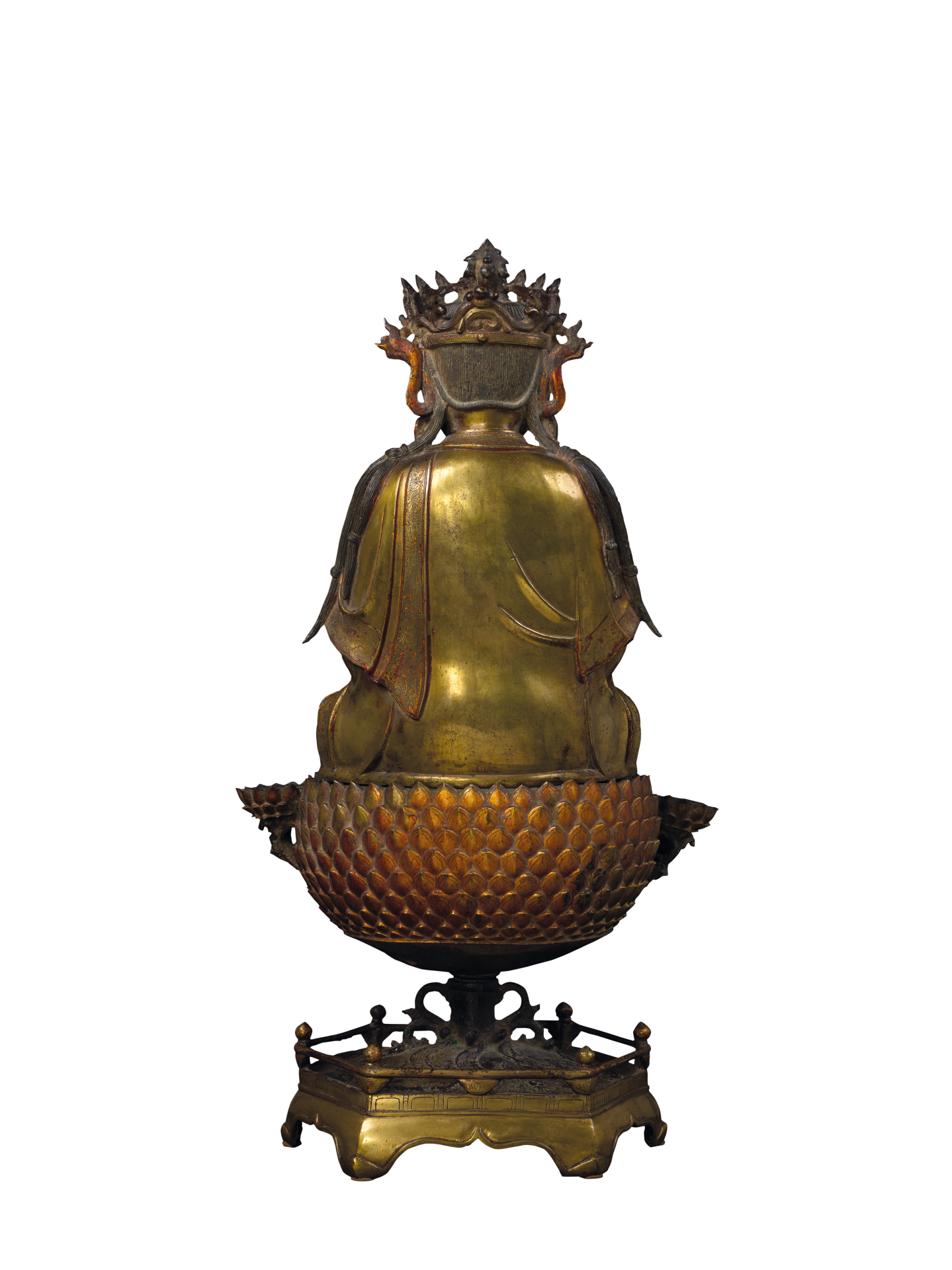Seated Guanyin Bodhisattva
This statute of Bodhisattva Guanyin has an oblong face with distinct angularity, a broad forehead, a crown with openwork floral and tendril design, and an image of the Amitābha Buddha at the centre front; pendent ear ornaments, braids of hair laying over the shoulders, downcast eyes, a protruding chin, a delicate mouth with thin lips and lifted outer corners hinting a smile, and a compassionate countenance.
He wears a robe and strings of jewellery upon the body. The attribute, possibly a willow branch, originally held in the raised right hand is gone. The left hand is holding a small cup in front of the belly. He is seated with legs locked in ‘lotus posture’ (padmāsana) on a lotus pedestal. The flat chest shows no muscular undulation. The hands are exquisitely modelled with long fingers, slender knuckles and exquisite fingernails. The hand gestures are very graceful, while the upward-facing soles of the locked feet have a decorative border around the edges. In fact, the borders of the robe and skirt are chiselled with various floral, foliage and continuous beads motifs against a fish-roe background, creating a strong layering and decorative effect. The separately cast pedestal is in the form of a large lotus rising out of a parapeted plinth. The hollow hemispherical lotus has multilayer, thick and upward-facing petals with slightly outward tilted tips and incised details. This large lotus is flanked by two small ones borne on stalks issued from the bottom of the pedestal. The upper surface of the plinth is engraved with wave motifs.
Buddhist statuary became increasingly formalised and flattened in the mid- and late-Ming dynasty (1368-1644). This is particularly obvious in the modelling of drapery represented by rigid ridges. The folds are symmetrically arranged, but the body lacks undulation and the garment fabric appears ponderous. However, the chiselled designs along the borders of the garment have added resplendence to the overall decorative effect.

